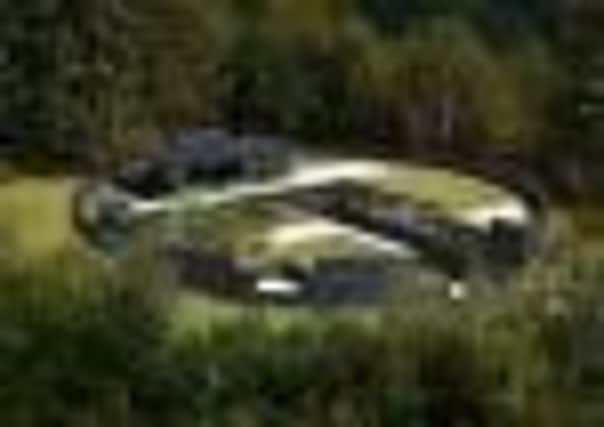Arts Diary: Stealth-broch grand design to hide a family in the trees


Plans for the “substantial” home, set in the historic landscape around Carolside House, near Earlston, have generated much comment at the current Royal Scottish Academy open show. It has space for five bedrooms and two cars, and is hidden away within a circular stone wall.
“It’s what we call one of our stealth projects,” said Murphy. “It’s a mysterious object, you don’t recognise it as a house, you see it really as a rubble or stone wall that is slightly eroded, the way you see sheep pens or a broch.”
Advertisement
Hide AdAdvertisement
Hide AdThe aerial view of the house at Knock Know is strikingly modern, but people approaching it on the ground would see neither windows nor a road, with the access to the site masked by trees. The rooms open onto an internal garden. The only giveaway is what Murphy describes as a raised glass pavillion, housing the living room, in what is otherwise a single-storey building.
The unique building would be sited on forest land that has recently been cleared. In seeking planning consent, Murphy argues that the home, for a family that’s owned the land for two generations, would actually restore the landscape to a 19th-century mix of open meadow, deciduous trees, and retaining walls, rather than see it simply replanted for forestry.
“It’s not my homage to a broch,” Murphy says – though he once argued, in a magazine article, that Scotland’s best preserved broch, on the island of Mousa in Shetland, is the country’s most important historic building. The proposed building has the same diameter as a broch at Edin’s Hall, Berwickshire, 15 miles away, a southerly version of the mysterious Iron Age structures.
Bag a piece of Karla
A handbag? Lady Bracknell would have had a field-day with some new artworks by Turner Prize nominated Karla Black, now up for silent auction to raise funds for the Glasgow Project Room.
Bidding is now open for three linen handbags designed and signed by the artist, in order to raise money for the art space in the Trongate where she first showed her work in early group and solo exhibitions after leaving the Glasgow School of Art.
Anyone interested buying one or all of them should dispatch their offers by e-mail to [email protected] by the deadline of 5pm on 4 December, when the winner will be announced.
What’s a fair investment for a Black bag? Hard to call. Serious but modestly-sized works by the artist were selling for about £9,000 at the Frieze art fair recently. Tantalisingly, bids will close the day before the Turner Prize jury announces whether it’s Black, her fellow Glasgwegian Martin Boyce, or one of two other contenders who will carry off the £25,000 first prize.
Cabaret in The Caves
Death’s Cabaret – A Love Story, is a new work by the Edinburgh-based composer Stephen Deazley, billed as a “beautiful merging” of cabaret and 19th-century concerto. We’re not entirely sure what that portends but the Scottish premiere happens in the somewhat unlikely setting of The Caves, on Niddry Street in Edinburgh, on 29 November.
Advertisement
Hide AdAdvertisement
Hide AdThe line-up is promising. Deazley’s CV includes his memorable 2008 collaboration with author Alexander McCall Smith on Dream Angus, part of Scottish Opera’s Five:15 showcase, and he penned their recent community opera, Dr Ferret’s Bad Medicine Roadshow.
The libretto, by Bafta-nominated writer Martin Riley, features a man telling the story of meeting a dangerous woman and falling in love. It is performed by cellist and opera singer Matthew Sharp, with the prize-winning Sacconi string quartet.